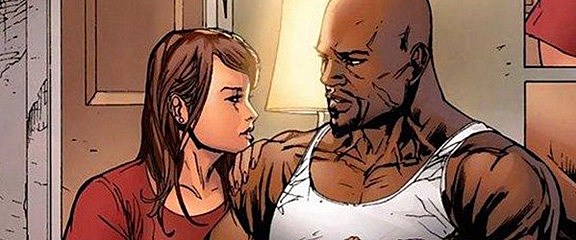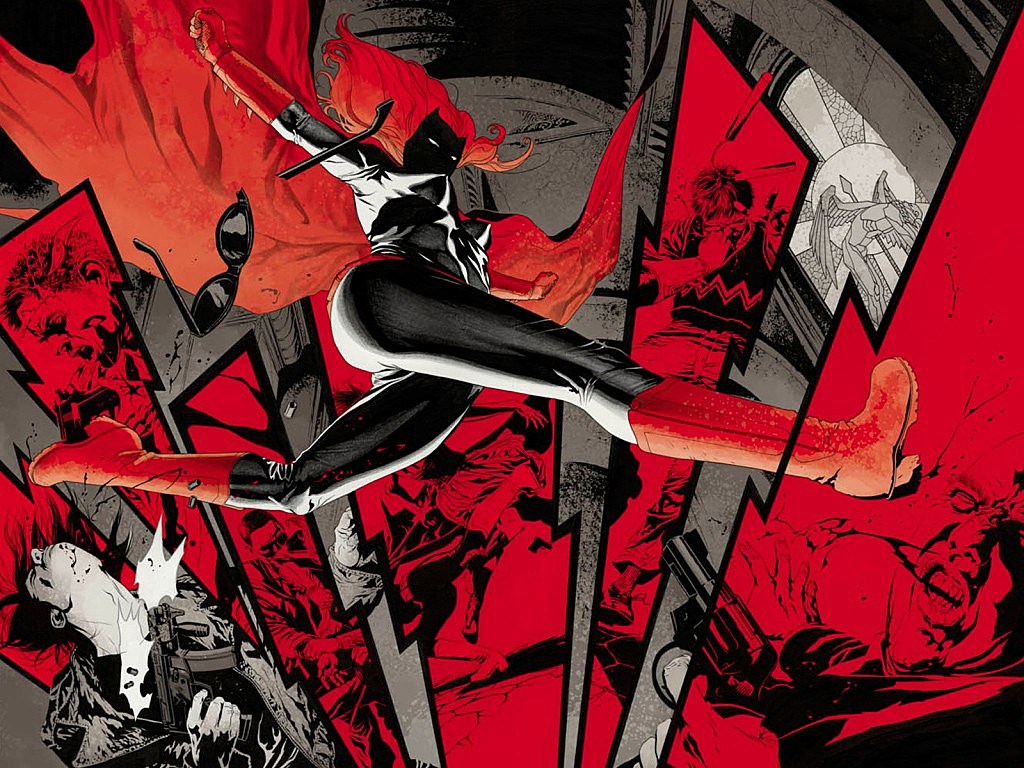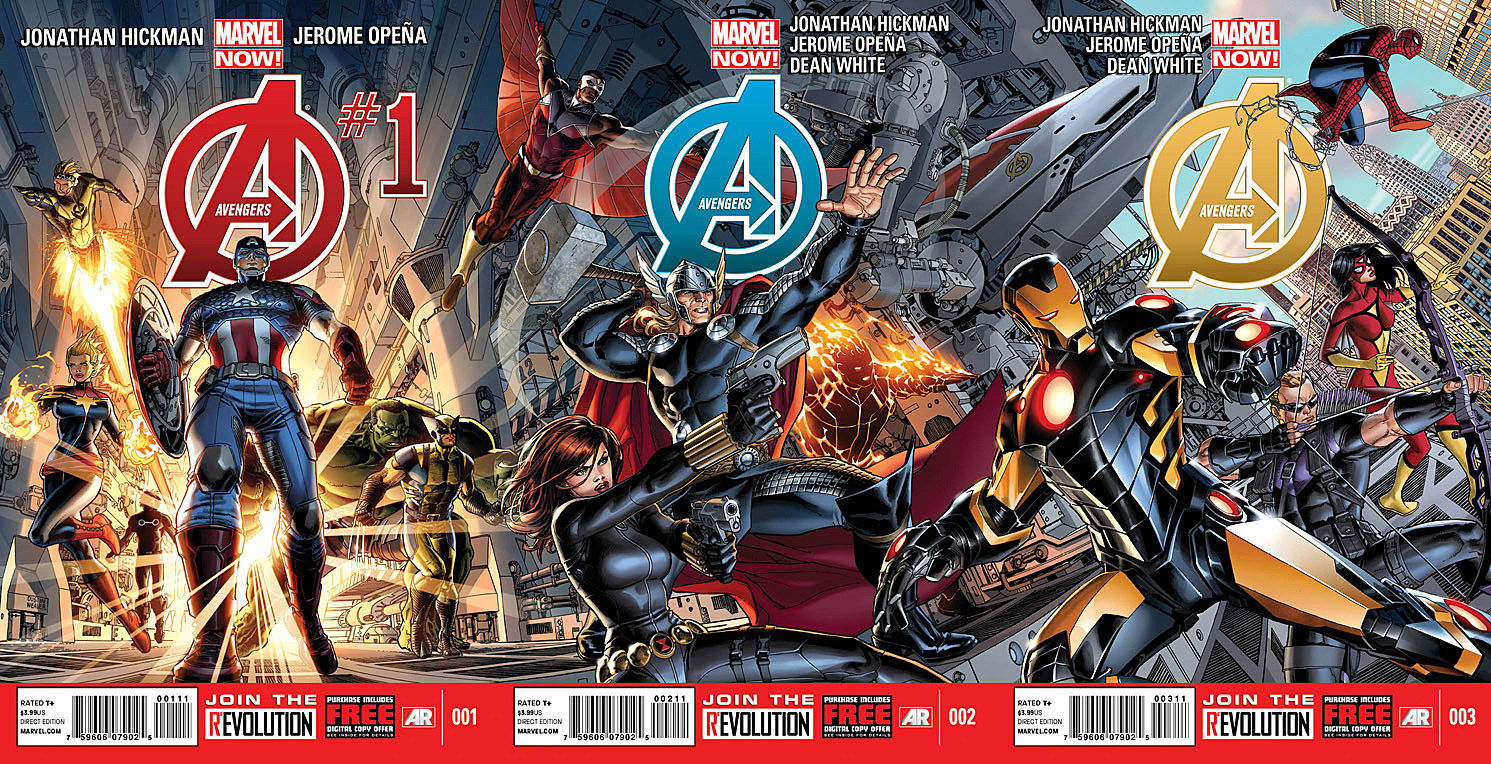
Everybody In Spandex: On Diversity And Superhero Comics

I recently attended a talk with Archie Comics writer Dan Parent at Toronto's Glad Day Bookshop. Parent was there to talk about Kevin Keller, the gay teenager whose arrival in the fictional town of Riverdale prompted Archie to go to a second printing on a title for the first time in its 70-year history. Keller's appeal earned him a four-issue series followed by an ongoing series, and Parent attributed this success to the character's ability to reach readers who have never picked up Archie books before.
Diversity can deliver an audience, and it's no mystery why. Minority audiences have long felt ill-served by mainstream media that showed an understandable but frustrating bias towards the people with the most purchasing power. Now the means to create and deliver culture has fragmented to the point where niche targeting often reaps greater rewards than trying to satisfy a broad audience. Minorities offer an established market segment with an appetite for representation. Kevin Keller appeals to gay parents and gay kids; to parents and kids who sympathize with or care about gay rights and representation; and to gay adults who have never seen themselves represented in this way. Showcasing a gay leading man in a comic for young readers helped set Archie Comics apart.
Lesbian superheroine Batwoman (click to enlarge)
But it's easier to get to Riverdale at the grocery store than to get to Gotham City at the comic store. Superhero publishers like Marvel and DC have struggled to get their books into the hands of minority audiences.
It's not because they haven't tried. Time and again these publishers have made efforts to showcase minority characters. DC publishes Batwoman, the first lesbian superhero to carry her own title, and the publisher has repeatedly put some of its best creators on Wonder Woman in an attempt to make the book as big as its brand. For years DC had a disabled woman at the heart of one of its superhero families in the form of Oracle in the Batman books. It placed black, Latino and Asian characters in some of its marquee legacy roles, and recently unveiled both gay and Arab-American Green Lanterns.
For its part, Marvel has for years placed gay characters on its teen team titles. It pushed characters like Luke Cage, Carol Danvers, Northstar, Spider-Woman and Brother Voodoo to the forefront in its events and major titles and has tried many times to make Black Panther a star. It placed a black Latino kid under the mask of its most iconic character in Ultimate Comics: Spider-Man, and it launched a series with a mixed race bisexual leading man in Daken: Dark Wolverine. Marvel and DC have both made multiple good faith attempts to add diversity to their lines.
Bi-racial superhero Miles Morales aka Ultimate Spider-Man

They've mostly failed. There are some hits in there, but the publishers' principal reward for trying to add diversity has been low sales. This is an industry where hits are hard to come by at the best of times, and these are not the best of times. Most of the successful properties have a pedigree of 40-to-70 years, and those characters are inevitably mostly straight, white and male, as is much of the audience. Introducing new characters to the existing audience is always a challenge; introducing minority characters to lure in a new audience is a high risk strategy that leads to a graveyard of cancelled titles featuring feisty young Asian or Latina martial artists.
So Marvel and DC face an awkward choice. They can ignore a potentially expanded audience of female readers, queer teens, and black, Asian and Latino kids and continue to serve a familiar and apparently shrinking current audience; or they can try to overcome the limitations of the industry and come up with new ways to reach those Kevin Keller markets. DC appeared to choose the former path with its New 52 reboot, but Marvel talks about taking the latter path with its Marvel NOW relaunch.
Team titles offer the most obvious opportunity for publishers to increase diversity in their output. Both publishers lean heavily on their biggest characters to sell their team books, but the same books offer a chance to build an audience for new or lesser characters. This is the technique Brian Michael Bendis used to great effect to elevate the African-American character Luke Cage and other favorite characters in the Marvel Universe. Team books allow publishers to bridge a gap. On the one hand they can satisfy readers who want to see Batman and Wolverine; on the other they can introduce readers to characters they might learn to love. In effect the current audience underwrites the R&D for new or minor characters that may appeal to audiences that want to see themselves represented.
DC Comics' new Justice League

This strategy seems so self-evident that it frustrates me that it's so often squandered. I accept that solo books with female leads have proven a hard sell for a male-dominated audience, but I don't see why any team book with seven members should ever have only one or two women. I understand why Cap, Iron Man, Wolverine and Spidey need to magically appear on multiple teams at once in addition to their own books, but I don't understand why all those other white people need to be there. I don't understand why Monica Rambeau isn't on any team at all.
The answer that editors, creators and some fans typically give to these questions about diversity is that story comes first. Story is what matters. Good stories are the most important thing.
But that's a red herring, and such a pious one that it might be a holy mackerel. There is no binary choice between "good story" and "better representation." The "good story" line is popular nonsense. One might as plausibly defend bad spelling by saying "we put story first." No one has suggested that diversity should come at the expense of story, and there is no tension between those expectations. Story should come first, but, "a better reflection of the diversity of the world wherever possible" should be somewhere on the same checklist.
So there should be a quota, right? Every team 50% female. One third non-white and/or Hispanic. One LGBT character, rounding up. Quotas are controversial because they're seen as breaking the connection between achievement and reward, and addressing one injustice by creating another. Those objections don't apply to comics. Artificial systems aren't unjust in artificial worlds. Everything that appears in a book is a choice of one thing over another.
As demonstrated in Grant Morrison and Brian Bolland in Animal Man, fiction is a construct.

Fiction is a construct. It doesn't grow in a unicorn forest. It's a product of design. In superhero comics it's usually a product of committee, of writer retreats, editorial input, shared universe complications and corporate needs. The process of weaving a narrative through the limits of a constructed world is called writing.
And that constructed world isn't any less artificial when it's disproportionately dominated by straight, white men. That world was a product of design as well; a world built to look non-threatening and familiar to a majority. Adding diversity doesn't suddenly introduce an agenda where there wasn't one before.
All that said, I wouldn't want or ask for a quota. I think a strict requirement that each team follow the same set pattern would have unwanted consequences, the main one being that it would be enormously boring. It would also mean that you'd never see teams dominated by women, or with more than a third non-white characters, or with a gay couple on the roster -- all of which we've seen in both the Marvel and DC universes.
But thinking in terms of quotas as a non-binding guideline could be helpful, because without some sort of prompt to encourage creators to think about diversity the default inclination is to go with what's familiar.
I was excited when Marvel boasted that its Marvel NOW Avengers roster would include "a lot of female characters, a lot of great diversity," and I confess I was disappointed when the first 14 members were revealed on the covers for the first three issues. Less than a quarter of the roster were women (Captain Marvel, Black Widow, Spider-Woman) and less than a quarter were from racial minorities (Falcon, Sunspot, Eden Fesi).
Fortunately that's not the whole team. Writer Jonathan Hickman said on Twitter that there are eight members yet to be unveiled. We know from past comments that one of them is Chinese hero Shang-Chi. One hopes that the other seven will include at least five more women, at least two more non-white characters, and perhaps even one LGBT character. Strictly speaking that would fall short of quota for an accurate representation of the US (assuming the demographic make-up of the US provides a reasonable standard for a global super-team), but it would be a laudable start. That sort of team diversity typically only happens when a conscious effort is made.
Some of these Avengers will be new characters, and a big debut like Avengers #1 seems like the best place to introduce new minority characters given that there really isn't a wealth of minority characters in Marvel's library. In fact if any of the new characters are straight white men that would be disappointing. Neither Marvel nor DC should really want to introduce any more straight white male characters unless the story demands it, as opposed to only breaking from the default assumptions of straightness, whiteness and maleness when the story demands it.
Getting more minority characters into the mix is half the battle, and there are plenty of existing readers who would appreciate it. We already know it won't necessarily drive sales unless the characters can find a new audience, and we also know that the Direct Market (specialty comic book stores) offers an unreasonably high bar to entry. In the content-on-demand age it seems less plausible than ever that one might expect to lure new demographics to specialty stores to advance order stories delivered in monthly twenty-page installments at $4 apiece, especially given that most comic stores are in predominantly white neighborhoods. Digital distribution may change that, but we're not there yet.
Superhero couple (and parents) Jessica Jones and Luke Cage

So it has to be bookstores. And it has to be books. Complete stories that can be picked up, enjoyed and understood without the complication and confusion of crossovers, relaunches, reboots, cannibalistic branding, double-shipping and variant covers. Those ideas help tap out the existing audience, but they're hostile to new readers.
And team books with a Latino member and a girl are not going to cut it in this market. These audiences want to see themselves as leads. They should be served by heavily publicized original graphic novels with minority lead characters written and illustrated by serious and possibly even representative talents.
These books might encourage the same readers to pick up a solo series or a team book, and to go into a comic shop to do it, but first you need the books. And these books need to be judged on how they perform in the book market with no consideration for their Direct Market sales. The new audience is not part of the comic shop ecosystem. The book about the Latina martial artist shouldn't be considered a flop just because it didn't sell in a market that doesn't actually include its target audience.
If superhero publishers want to reach new audiences -- minority audiences -- they need to make the right product and serve it in the right way, and it has to be done by design, and it has to be treated as new territory. Publishers can't hide behind precedent, and they can't hide behind excuses like "putting story first."
But maybe they don't really want these audiences. Maybe they haven't noticed how our culture is fragmenting and how niche audiences are emerging. And if DC and Marvel don't want those audiences, that's OK. The opportunity is out there, and someone will step up to take it. If story truly is the most important thing, the publishers who fall behind will find they've no one left to tell their stories to.
More From ComicsAlliance





![‘Batwoman’ #1 Delivers A Globetrotting Gay Adventure [Review]](http://townsquare.media/site/622/files/2017/03/BW_featured.jpg?w=980&q=75)


![Comics’ Sexiest Female Characters (From A Queer Perspective) [Love & Sex Week]](http://townsquare.media/site/622/files/2017/02/hg_featured.jpg?w=980&q=75)


